Ueken’s Collection of “How to Draw Manga Books” is Unbelievable! Find Out How Serious This Artist is When it Comes to Manga
Friday's Collecting Genjin, Part 6: "Going to See Kentaro Ueno's 'How to Draw Manga' Book Collection" (Japanese only)
Why do people collect things? What lies beyond collecting? Friday’s Collecting Originals” is a collection file that collects collectors. >
It is a family restaurant. As a customer opens the door, a female waitress asks, “How many customers are there?” He asks, “What do you want to do? Then, turning the page, the customer says, “Fifty thousand! the customer replies, “Fifty thousand people! Manga artist Kentaro Ueno (Ueken) left a strong impression with this three-page gag.
A specialist in manga meta-structures and parodies, he is also a collector of books explaining how to draw manga, and in 2015 he published a research book titled “Why I Can’t Make a Bestseller,” which introduced his collection of such books. So we went to Mr. Ueno’s home and work place to see his collection. He’s got a lot of free time on his hands!
I still find myself saying, “I didn’t know this was out there.
─ ─ When we interviewed Mr. Ueno’s collection of “how to draw manga” books, we made a list of questions in advance. I would ask questions such as, “Which was your first book? But when I read “Why I Can’t Make a Bestseller” (“Orebesu”), which you published seven years ago, I found all the questions I wanted to ask and the answers to them in the book.
Ueno: Haha, you may be right.
─ ─ That’s why I thought it would be difficult to work on it (laughs). Well, for readers who have not read this book, I will ask again what we know, but at the time you wrote this, you said that your collection had exceeded 250 books. But it has grown even more now, hasn’t it?
Ueno: I haven’t counted exactly, but it must be over 300 books. However, my collecting has been stagnant recently. In the past, most of the books introduced the entire process of manga, from the tools used to draw manga to how to create a story. But nowadays, they are subdivided into smaller sections, such as how to draw fighting manga.
─ Ah, I understand. In “Orebesu,” the transition of “how to draw manga” is categorized into three periods: the first “from the Taisho era to the early Showa era (prewar),” the second “from the postwar period to 2000 (Heisei 10),” and the third “after Heisei 10. You wrote that the second period corresponds to “many books that summarize the entire process in a single volume, and many of them are written by popular authors.
Ueno: If you go to a large bookstore, you will find a section with only manuals on manga techniques. I like the second period type, but there are not many of those available now, which is a bit of a pity.
─ ─ But when your collection becomes this substantial, don’t you feel a mysterious sense of mission? You say that you will buy whatever it is anyway.
Ueno: No, not really. If I tie myself down too much, it will only make it harder. For example, if you are a first issue fanatic and buy any and all first issues, it would be hard for you. I just buy them because they are not very interesting.
─ ─ So you allow yourself to be “loose” in your collecting.
Ueno And yet I have accumulated so much (laughs).
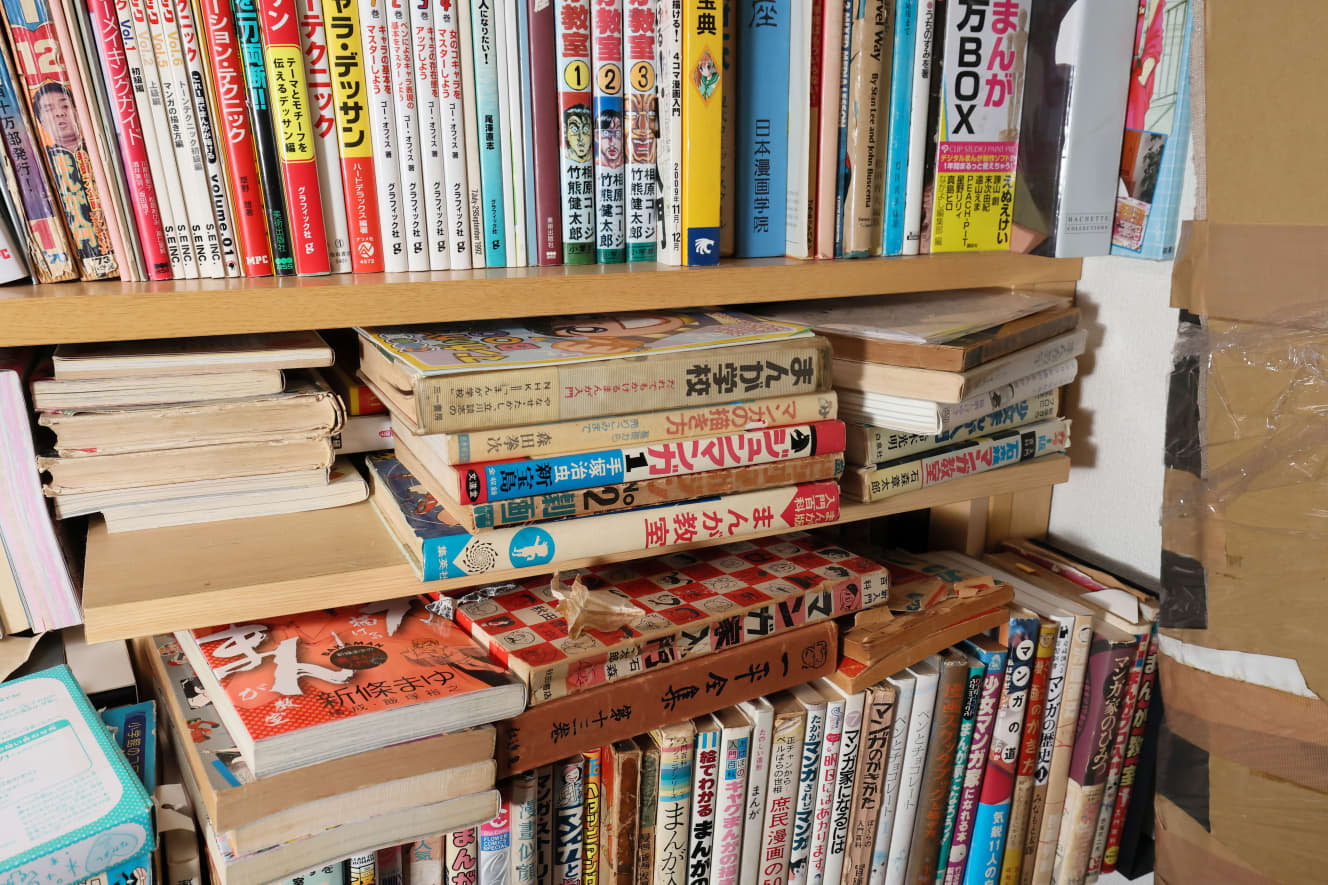
─ ─ As for the second phase, do you feel that you have collected almost everything?
Ueno I don’t know. …… I think I have collected quite a lot, but I still find things that I didn’t know were out there. I don’t think I’ve covered all of them. There is always something better out there.
─ Ah, that is the scary part of collecting.
Ueno: That’s why I am the best! I don’t think so.
─ ─ Are there other people with similar collections besides you, Mr. Ueno?
Ueno: I have never met anyone, but there are people who make lists and post them on the Internet. That list was not perfect either, but it listed even old items such as those issued in the Taisho Era (1912-1926). However, I don’t know if the person has the actual items or is still collecting them.
───Did you make a list yourself?
Ueno: No, I have not. But when I made this book (“Ore Bess”), my editor made a list and put it at the end of the book.
─ That reminds me, it was listed in the book.
Ueno I didn’t know I had so many! I was like, “Oh, my God.
─ ─ As if it were someone else’s problem (laughs).
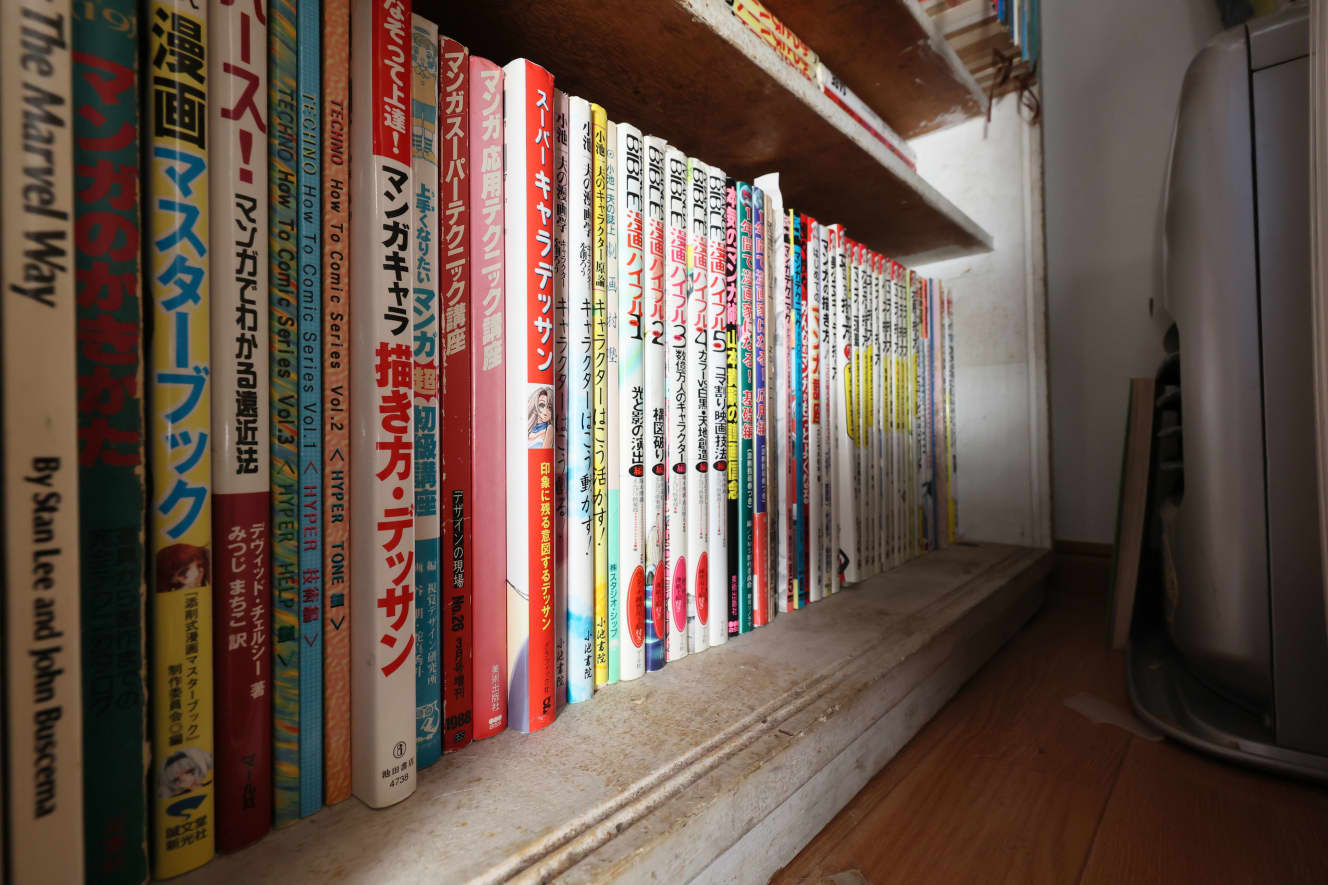
The first book was so bad that the cover came off and the pages fell apart.
─ I understand that the first book you acquired was “How to Write Manga” (1970, Akita Shoten), edited by the Adventure King editorial department. When you were in the second grade of elementary school, your father remembered that you had blurted out the words “I want to be a manga artist,” and bought the book for you.
Ueno: I don’t remember it myself, but apparently he said something like that. It was in the 6th grade when I officially decided to “become” a manga artist. I wrote “I want to be a manga artist” in the “What do you want to be in the future?” section of my graduation essay, which I thought was a kind of statement of conviction.
─ Perhaps you had a vague idea that you wanted to be a manga artist even before that, but writing in the book made it clearer?
Ueno: Yes, I guess you could say I backed it up in my mind.
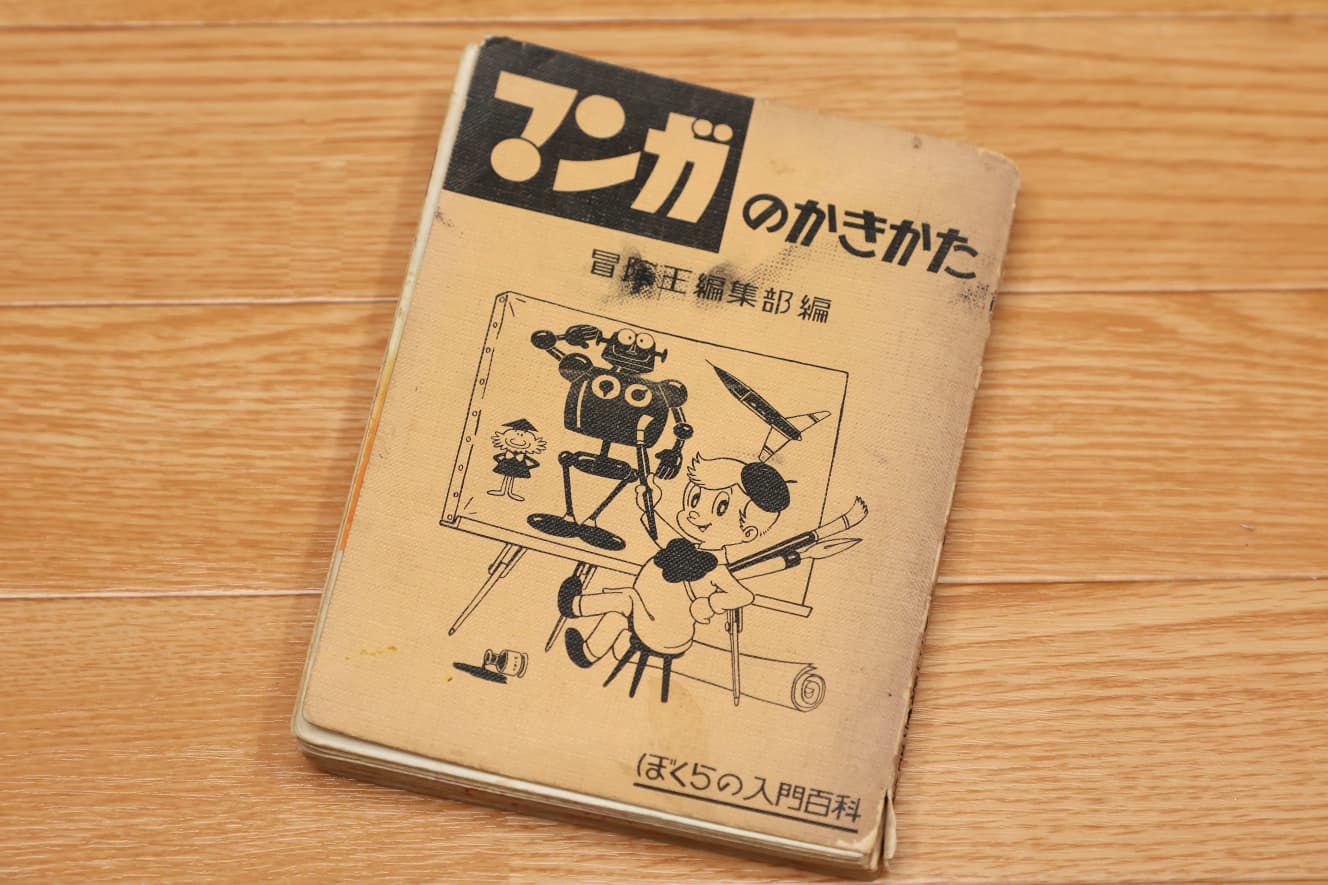
─ So you got a copy of “How to Draw Manga” when you had not yet clearly made up your mind to become a manga artist.
Ueno: Yes, it was a bit difficult for a second grader. I read it several times, but I didn’t dislike it at all. I enjoyed reading it, but when it says, for example, “The composition is stable with triangles,” I didn’t know what it was talking about. I was like, “What the heck is this?
─ ─ It seems difficult to ask second-year students to understand the concept of composition.
Ueno: Does the composition absolutely have to be triangular? There were quite a few areas that I didn’t fully understand. But I liked the book so much that I read it over and over again, and the cover is already gone, and the pages are in pieces because I read so much. I also doodle a lot.
─ ─ I like this page. There are traces of checks, like “I have this tool” (laughs).
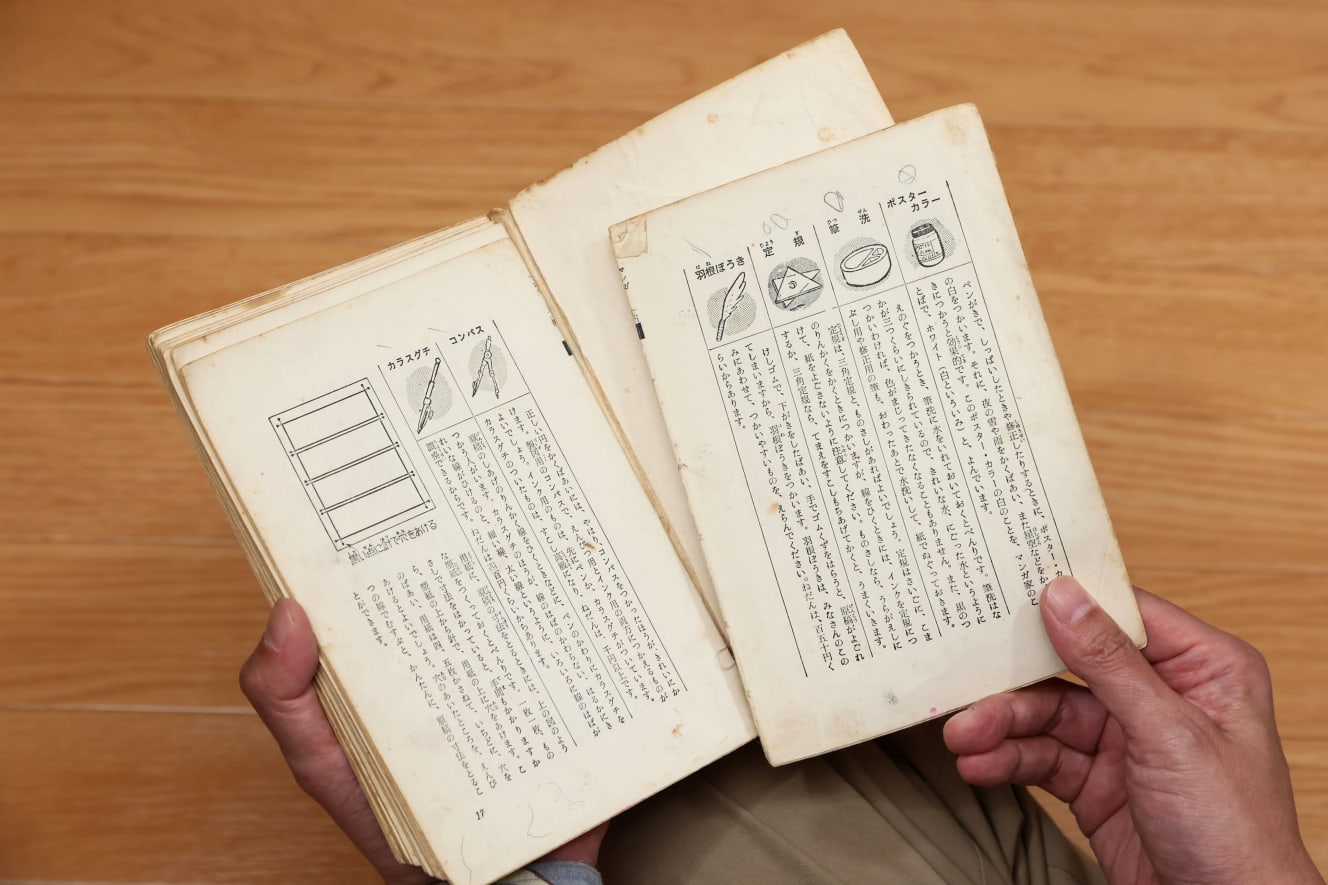
─ ─ In the first volume of “Cycle Bastard,” when Rintaro Marui sets off on his round-the-Japan trip, he draws a list of the luggage he will carry. I also wanted to travel around Japan someday, so I checked off the tools I was carrying on the list (laughs).
Ueno: You know “Elmer’s Adventure,” right? It also shows what Elmer took with him. Like 10 bundles of rubber bands (laughs). That will be useful when we go to Animal Island.
A Manga Artist’s Guide for Boys” with his friend’s name on it.
Ueno: So after “How to Write Manga,” I came across a booklet that was a supplement to a school yearbook. In it, there were instructions on how to draw portraits and how to draw manga, and I began to understand the flow of how to draw in this way.
─ ─ Yes, yes, in the old manga magazines, there were things like how to draw manga and how-to books inserted in them.
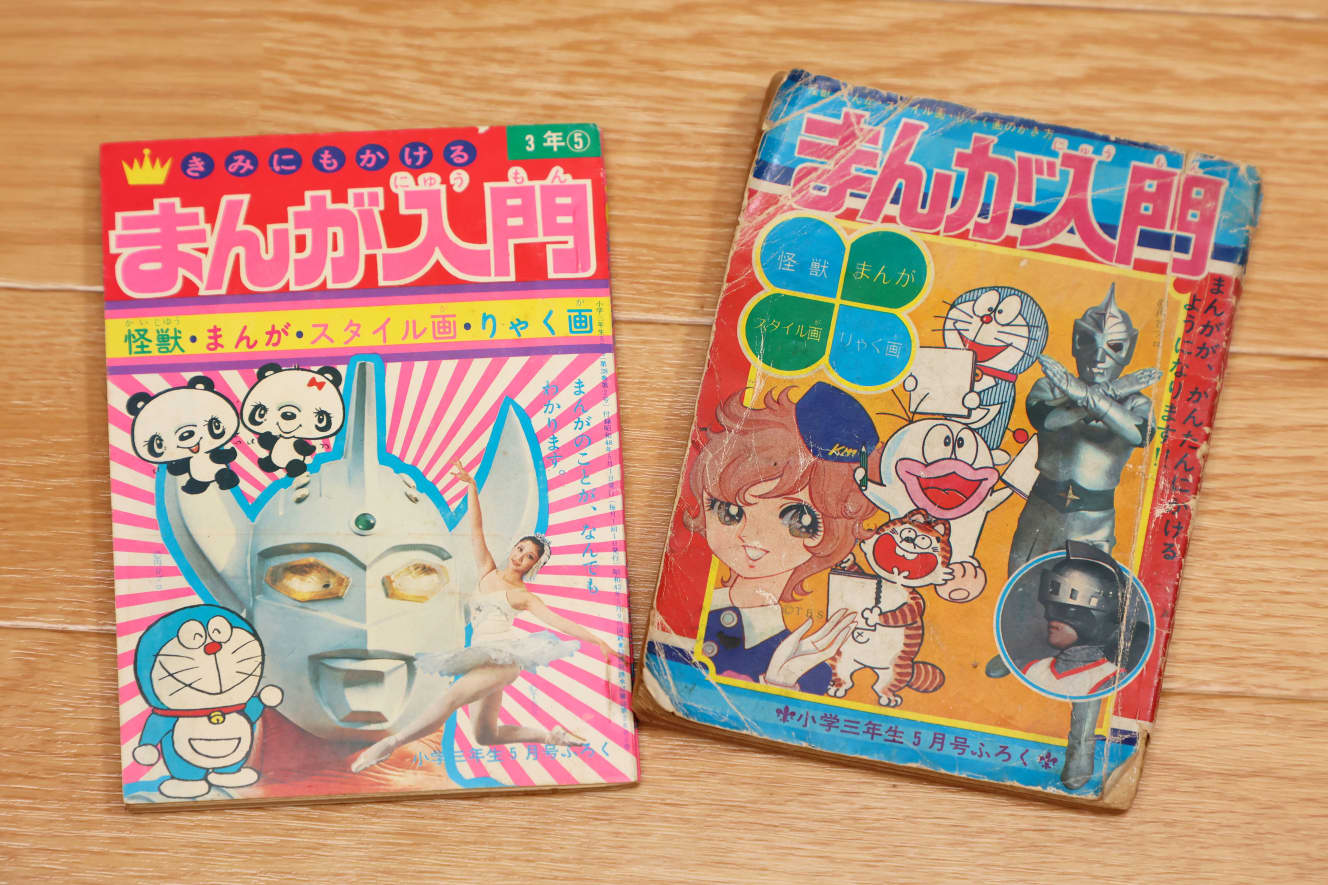
Ueno Later, at a friend’s house, I came across Shotaro (Ishinomori) Ishimori’s “An Introduction to Manga Artists for Boys” (1965, Akita Shoten).
─ That was a great book. I had a copy when I was a child.
Ueno: I was given a copy of that book. I think it was around that time that I started collecting “How to Draw Manga” books.
─ ─ Since you had such a book, did your friend have a longing to become a manga artist?
Ueno I don’t know. I have never seen him drawing manga (laughs).
─ ─ Since he gave it to you, you must not have been so attached to it.
Ueno That’s why his name is written in the book I have now, “An Introduction to Manga Artists for Boys.
─ ─ Haha, that is a memento of him, isn’t it?
My collecting has accelerated since I started Yahoo!
─ What I wanted to ask you the most today is that you have the first book. I did not choose it myself, but my father bought it for me out of his own goodwill. Then I started collecting them in the form of appendices.
Ueno: No, I don’t feel that I am still collecting them.
─ ─ I see, you just happened to get a supplement to a magazine that you looked forward to buying every issue. But eventually, it turns into a collection, doesn’t it? I want to know that moment. I was wondering if there is a particular book that triggered your conscious decision to collect this field.
Ueno: In short, you buy a book because you like it, and you think, “Oh, there’s this kind of book, too. At that stage, I don’t have the idea of collecting this genre yet.
I think that’s right. At first, I was simply curious to read other books.
Ueno I wonder where the trigger or …… came from. Anyway, it was when I started Yahoo! Auctions that I started to accelerate.
I think it became easier to get them.
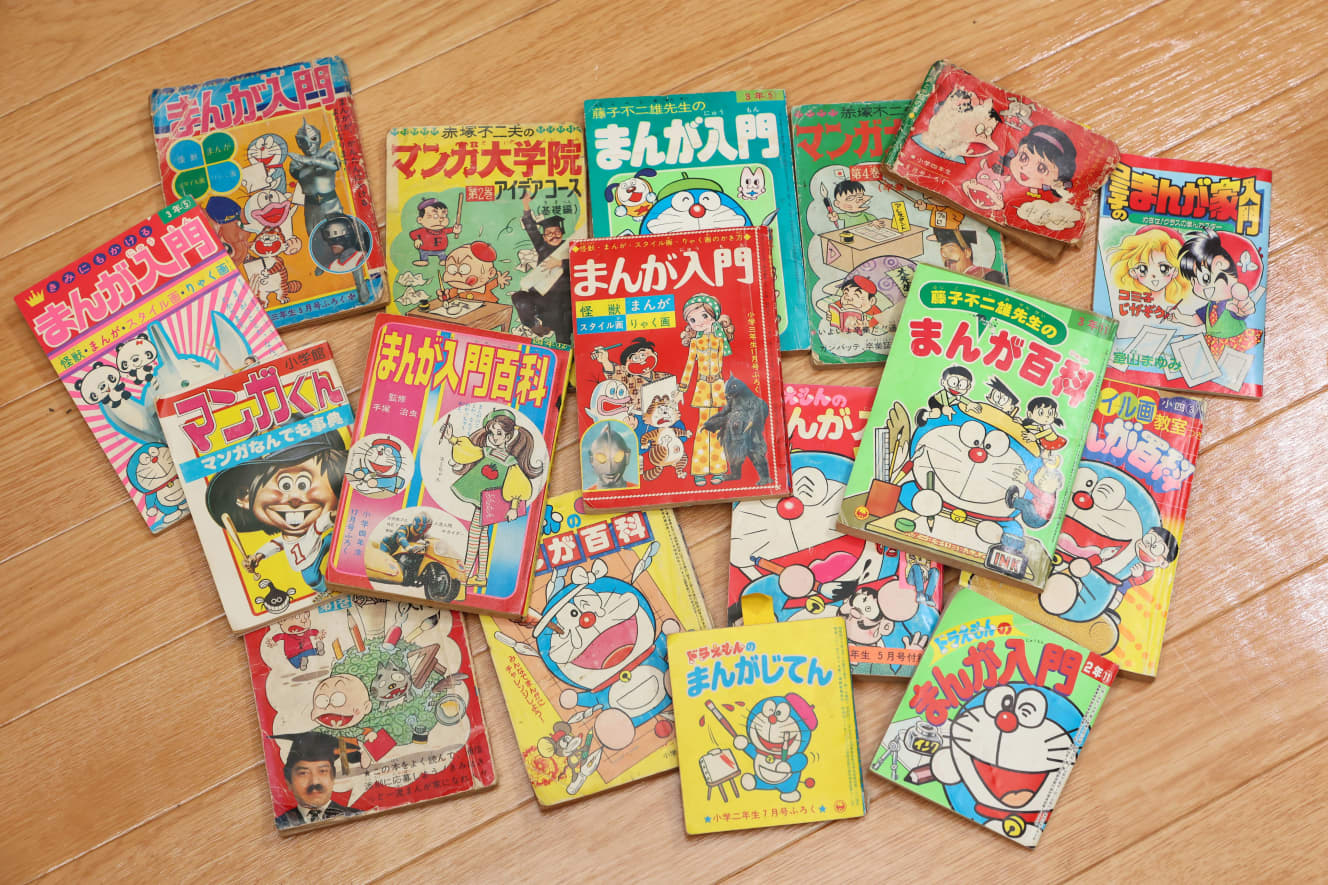
Ueno: Before that, I couldn’t find things I couldn’t find at used bookstores, but if I searched Yahoo! I am definitely aware that I became a collector from that point on.
─ ─ Mr. Ueno’s style is also excessive, so I was wondering if that had something to do with it. I was thinking, “It would be great if there were only a bunch of books on how to draw manga.
Ueno: Well, that’s not what I meant. But I think the appendixes were clearly collected in a maniacal way. They are hard to find, and there are not so many of them around. For example, if you were really a maniac, I think it would be possible to go to Shogakukan and find out what issue of what year contained how to draw manga, or which issue had such a supplement, and make a list.
─ That’s right. That is possible in your profession, isn’t it?
Ueno But it’s too much trouble to go that far, so I wonder if someone else would do it for me (laughs).
─ ─ In “Orebesu,” you often say, “Someone do it for me. In that sense, you don’t seem to be an enthusiast or a researcher, nor do you seem to be a collector.
Ueno That’s a subtle point. I think other people would say that I am a maniac and a collector, but I don’t consider myself to be that demanding. I don’t cover everything in my collection with paraffin paper and store it carefully.
──It is a necessity of your work that you have a lot of manga.
Ueno Yes, I am a bit of an easy-going manga lover.
I’m a wasteful person, so I can’t throw things away.
─ ─ Didn’t you collect miniature cars as a child or something like that?
Ueno: No, I don’t. I did collect monster toys, but I didn’t arrange them on a shelf like a collector, or take them out of their boxes. They were just randomly shoved into cardboard boxes.
─ ─ For my part, I was wondering whether the more than 300 “How to Draw Manga” books were the result of your collector’s nature, or whether they were the inevitable result of your profession as a manga artist.
Ueno: I’m a wasteful person, so I can’t throw things away. I collect everything. Some people throw away appendices after they read them, but I don’t go out of my way to keep them. I am now thinking of downsizing my room because I have so much stuff in there that it is becoming a big mess. I’m thinking of downsizing now, but it might be coming from such a miserable place.
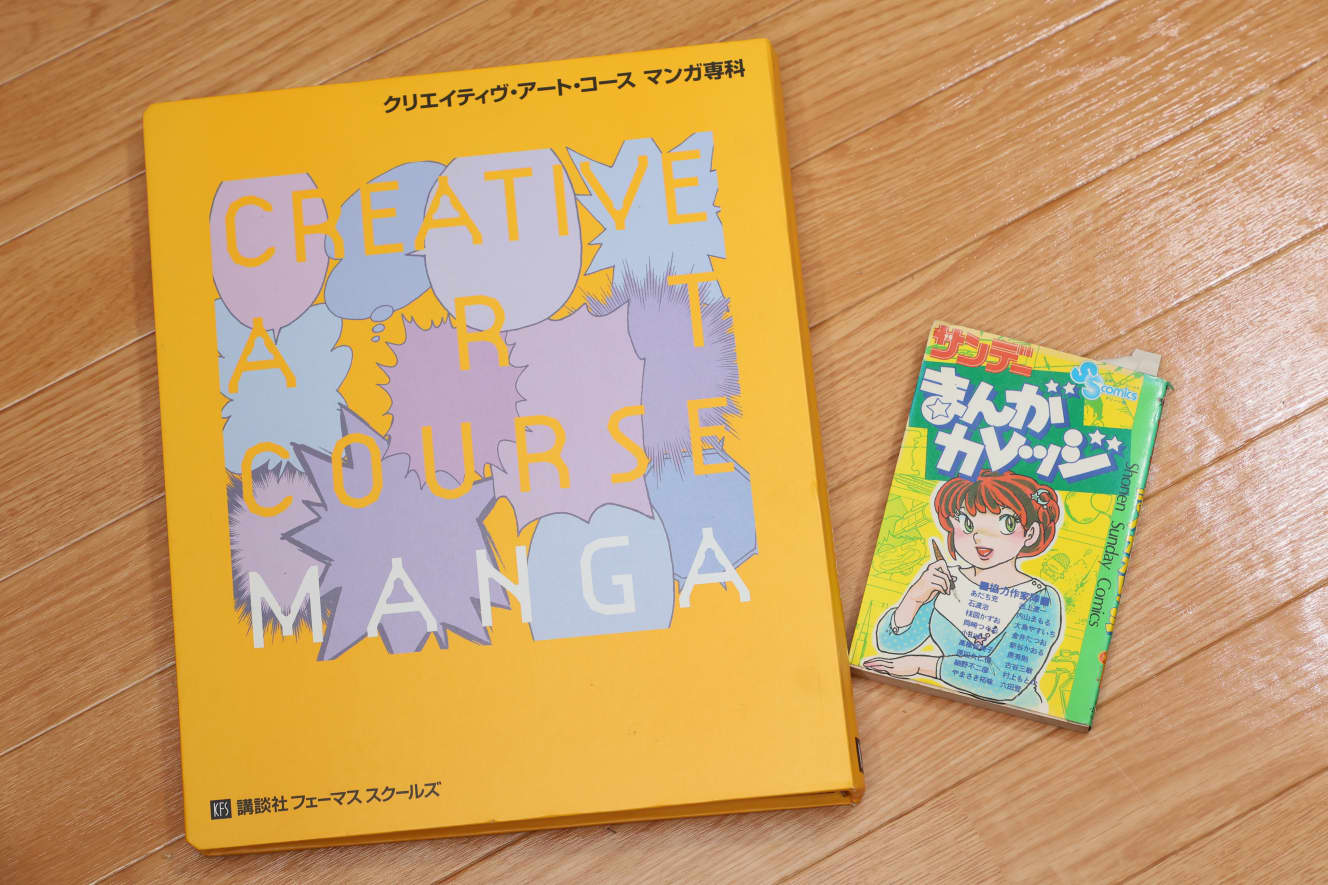
─ ─ Are there any other manga artists who collect “how to draw manga” books?
Ueno I have heard that Naoki Karasawa seems to collect them.
─ Ah! Looking at their styles, Kentaro Ueno and Naoki Karasawa have something in common.
Ueno …… means that Tori Miki seems to collect them too.
─ ─ In short, they are parodies, or people who enjoy and delve into the meta-structure of manga techniques.
I would like to draw a “how to draw manga” book someday.
───When Koji Aihara and Kentaro Takekuma’s “Even a Monkey Can Draw Manga Class” serialization began, weren’t you quite frustrated, Ueno-san? This is what I wanted to do!” I think it is a bit like that.
Ueno: It was more like “I never thought of this! So I was rather impressed with Mr. Aihara and his team.
─ ─ At the time, when that started, manga lovers were in an uproar.
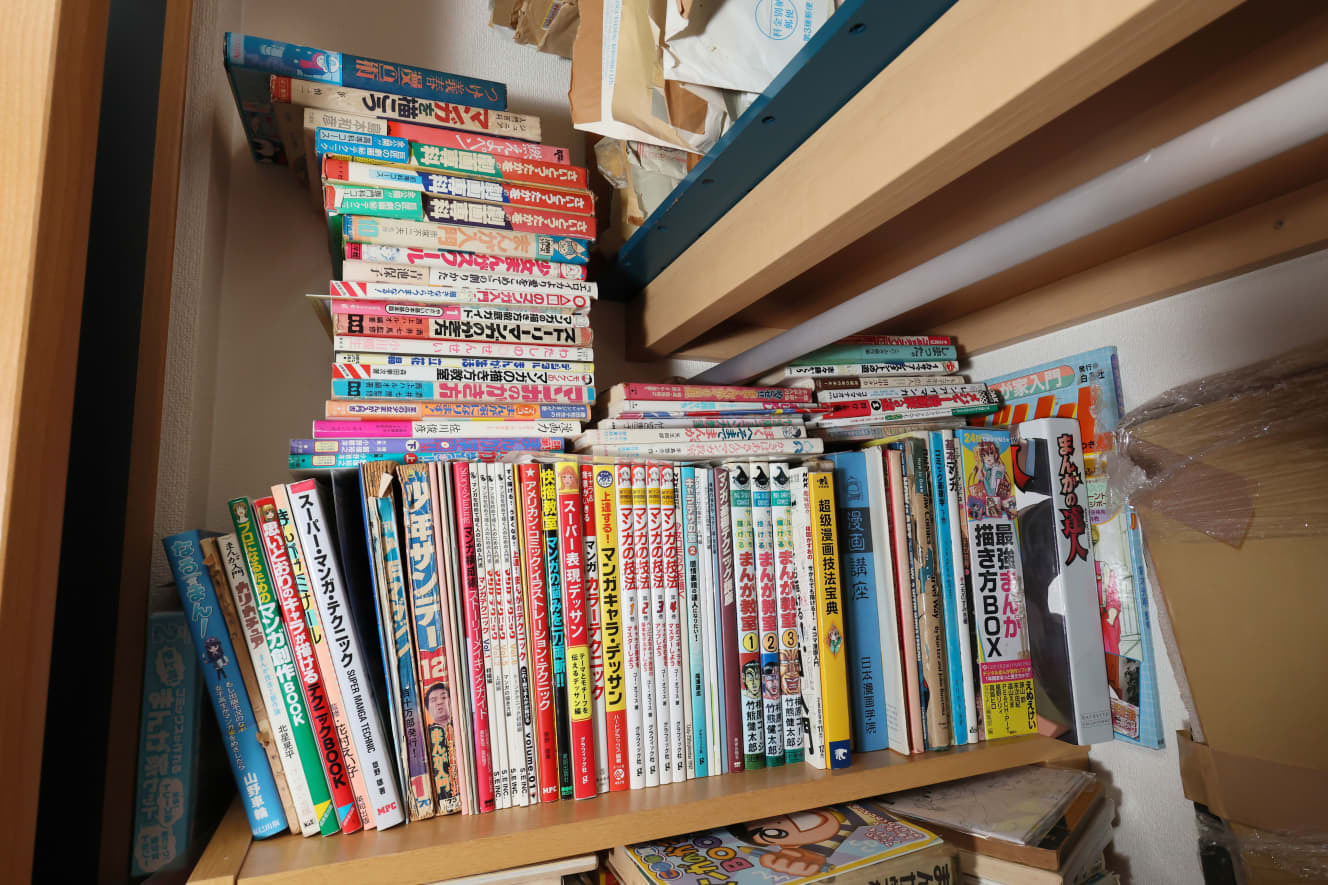
Ueno: On the other hand, there are works like Reijiro Kato’s “Megumi no Haru” in which the main character is an aspiring manga artist, and although it is basically a manga artist story, there are other types of works in which know-how is also incorporated and manga drawing methods are taught. Naturally, the emotions of the main character are depicted, and it is interesting to see the pride that a professional must have in his/her work.
─ ─ Ah, that’s what I wanted to ask you about, but in addition to “Megumi no Haru”, there are so-called “manga artist manga” such as “BAKUMAN” (Tsugumi Ohba and Ken Obata) and “Kakukakajika” (Akiko Higashimura), aren’t there? Do you collect those as well?
Ueno: I just buy what I like, but I don’t really collect them.
I just buy the ones I like. If the main character is a manga artist, there is no end to it.
Ueno That’s right. I guess I collect more know-how.
─ ─ Do you have a collection of “Manga-do”?
Ueno: Of course. However, the sequel, “Ai…Shirisome Shikoro” is a bit lacking.
─ ─ I too was absorbed in reading “Manga-do”.
Ueno: I was traumatized by the part where he goes home to Takaoka and drops the manuscript.
─ ─ That must have been a nightmarish scene for a manga artist (laughs).
Ueno: That is why I have never dropped a manuscript since I became a professional. I was determined to meet deadlines. When Go Nagai-san was working as an assistant to Shotaro Ishimori, he saw Ishimori-san apologizing to the many editors who came to see him, saying, “Wait for me, wait for me,” and he thought to himself, “I will definitely meet the deadline.
───Do you ever think of drawing something like that (a book on how to draw manga, or a manga artist manga) yourself?
Ueno Oh, I have tried a little a few times, but “Saruman” topped the list in some respects (laughs), so it is difficult to think about what I can do. Once I thought about “how manga should be drawn.
─ ─ What is that?
Ueno The main characters know what they are being portrayed as. ……
─ ─ He’s starting to complicate things again, he says (laughs).
Ueno: They predict how they will move, and how they will be moved next. We would say, “That’s just a common thing! I would say, “I’m sorry, I can’t do that. The story unfolded as we discussed it with ourselves.
─ The characters give their own comments on the story.
Ueno: In short, it is a meta-structure. It’s like, “This is not the right opening. Let’s redo it! And so on. For example, if the setting is a school, “It would be easier not to draw from the desks down in the classroom! And so on.
─ ─ I would love to read that!
Ueno: So, if we are going to do this, we want to put our guts into it and create something that has never been done before, not just a book of know-how. I have a lot of material to work with.
─ That’s right!
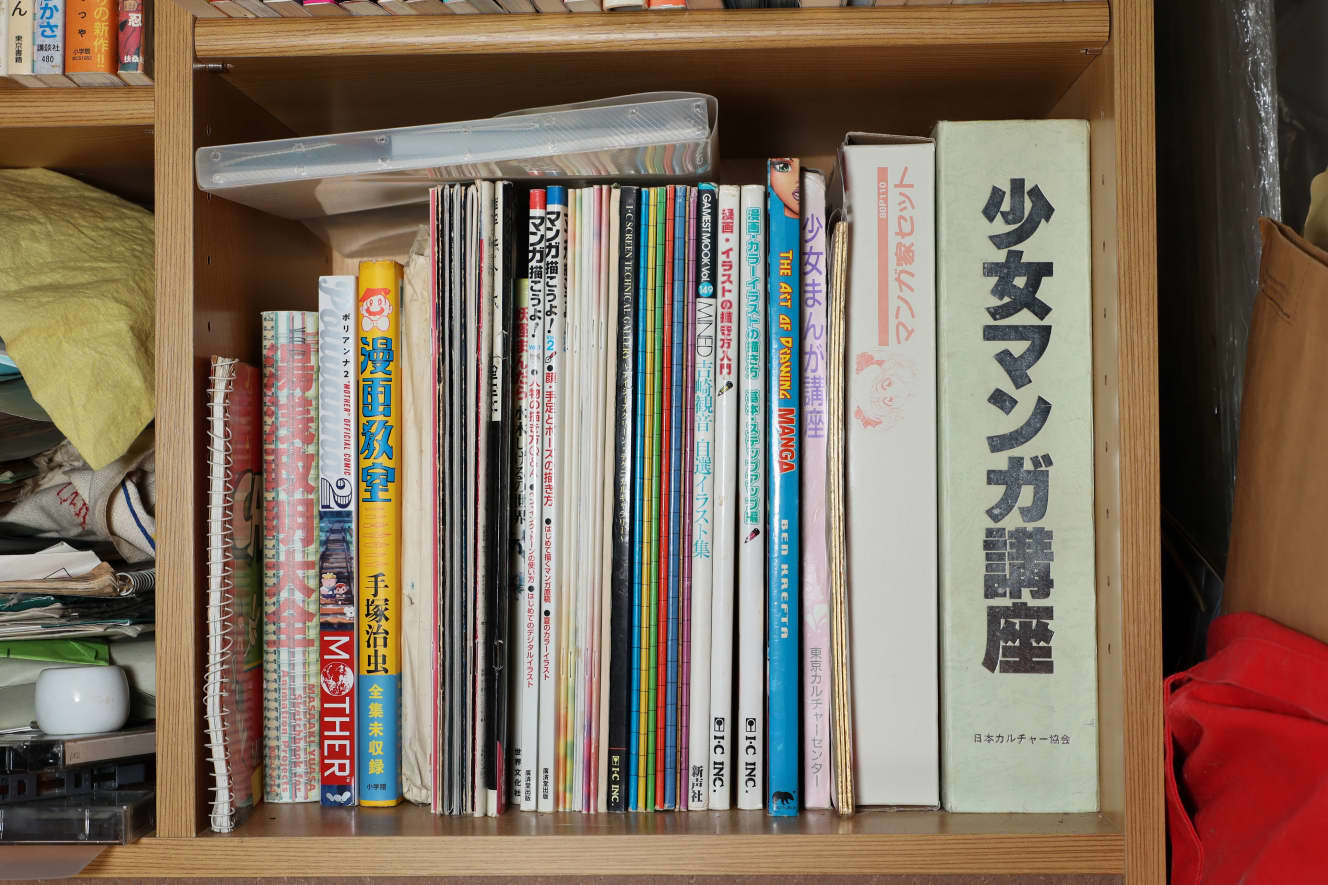
If a gag manga artist were to appear in “Manbun,” what would it be?
─ What about Naoki Urasawa’s “Manben” (NHK E-television)? Of course you like it, don’t you?
Ueno: I watch it, I watch it. However, what is a little disappointing is that gag manga artists are not featured.
─ Yes, that’s right! I was thinking the same thing!
Ueno: So, I took the liberty of thinking that since Naoki Urasawa is the instigator, I would have Naoki Karasawa appear as a representative of gag manga artists.
Urasawa Naoki and Karasawa Naoki. Haha, I like that.
Ueno: Karasawa-san might not want to do something like that (laughs).
─ ─ I was thinking, “Manbun” focuses on drawing techniques, doesn’t it? However, gag manga is more about the story than the technique, so perhaps “Manbun” is not suited for filming.
Ueno What kind of ideas did you use to draw your works? It would be interesting if we could film something that would allow us to trace the thinking behind the work.
─ ─ Mr. Ueno would definitely like “Manbun,” so I was thinking a lot about “Manbun” for today, but then I noticed that there were almost no gag manga artists in the film. Akiko Higashimura and Wataru Watanabe draw gags, but they weren’t chosen for that aspect. So I thought about who would be the gag manga artist I wanted to see in “Manbun” (……), and I thought, “Oh, it’s Kentaro Ueno.
Ueno Oh, thank you for that (laughs).
─ ─ I think it would be interesting if you could show us what kind of work process you went through when you were drawing “Alice in Osamu’s Land,” for example.
Ueno I think it would be interesting if you used CG or something like that, and showed a chart showing the initial thought process, and how it developed from there, and how it ended up. Like Carl Sagan’s “COSMOS,” which was done a long time ago.
─ ─ That would be a different program from “Manaben” (laughs).
Ueno: Personally, I would like to see “Manaben” by Miki Tori or Yuki Shiikawa. Also, Kyosuke Usuta, who dominated Shonen Jump. He has a DVD on how to draw manga (*”Manga Lecture Magazine with DVD, JUMP Style, Usuuta Kyosuke Special Issue”). In the DVD, he talked about how doing a serialization in JUMP is a little different from doing a regular serialization. There are various exposures and popularity votes.
─ ─ It is very difficult to win a serialization, and even if you finally win, if your work falls to the bottom of the popularity polls, it is easily terminated.
Ueno: It is harsh. For someone like me, who has always done whatever I wanted in monthly magazines, Jump is very, very hard.
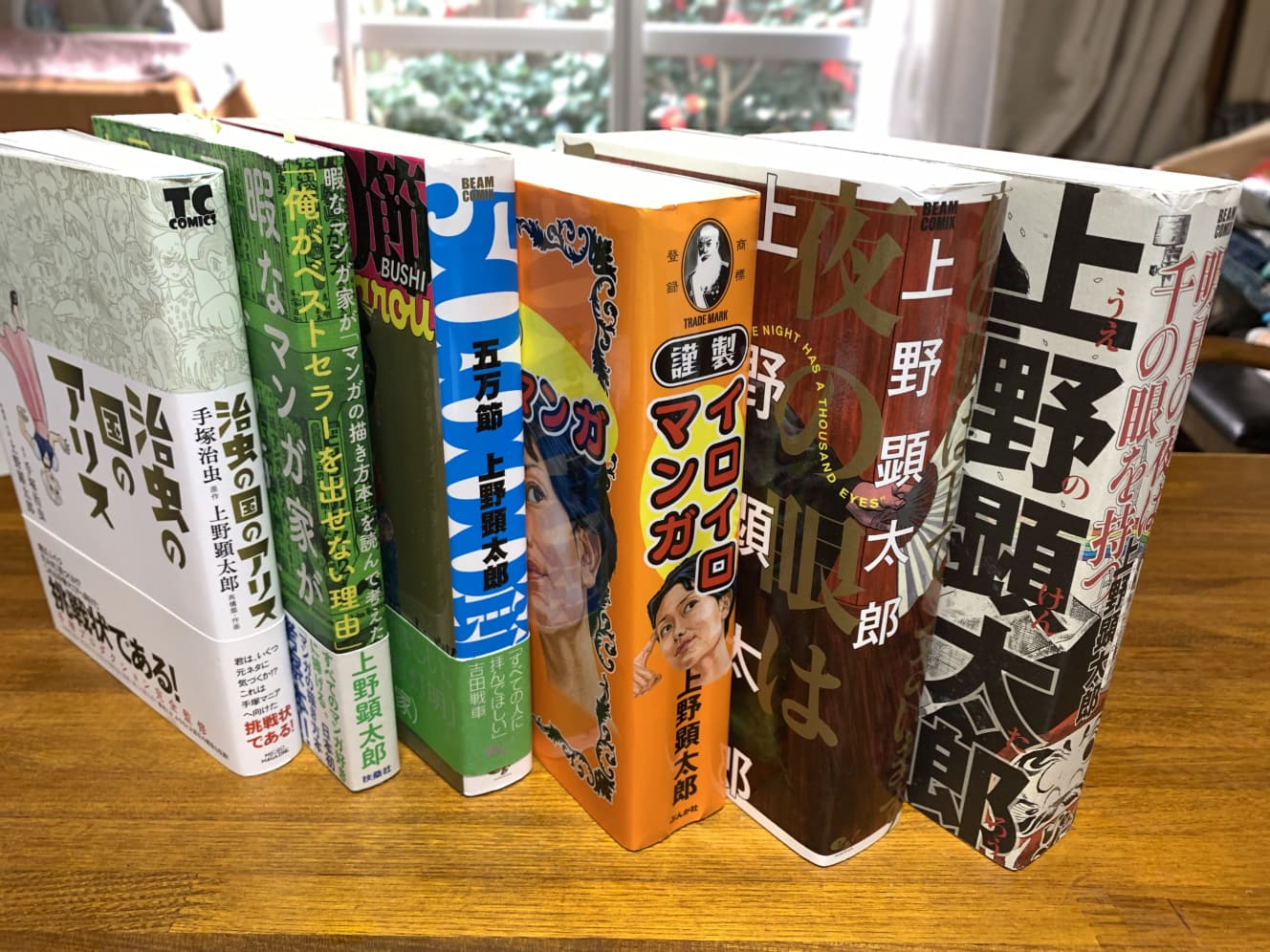
Four of my favorite books in the collection
─ ─ Returning to the subject of collecting, I know that very old and early books on how to draw are very expensive. Have you given up on acquiring such books?
Ueno: No, there are some that I worked hard to buy for about 5,000 yen, and some that cost more than 10,000 yen. At first, I wait and see how they turn out. I wonder if anyone will buy them at such a starting price. Then they buy it, and I’m aghast (laughs). (Laughs.) Just when you think you can’t get it anymore, it comes out even cheaper later. This kind of thing is really a water thing.
─ ─ In auctions, if there are several people who want the same thing, the price will go up. But aren’t there almost no rivals in this field?
Ueno: No, there are some. I can’t tell you how many times they have taken my appendices and so on. You can never be too careful. The most expensive book until now was Monkey Punch’s “Introduction to Comics” (1968, Futabasha). It must have cost around 13,000 yen. It’s not easy to find.
─ ─ (In the kitchen next to me), in front of his wife, I asked her, “Which one was the most expensive? I was afraid to ask him, but he told me himself (laughs).
Ueno: We are open about that.
─ Well, they are materials for my work. Which book is your favorite?
Ueno Well, apart from Ishimori’s book, I would say Fujiko Fujio’s “Manga Nyumon-hen” and “Manga Jisshu-hen” (both 1976, Wakagi Shobo).
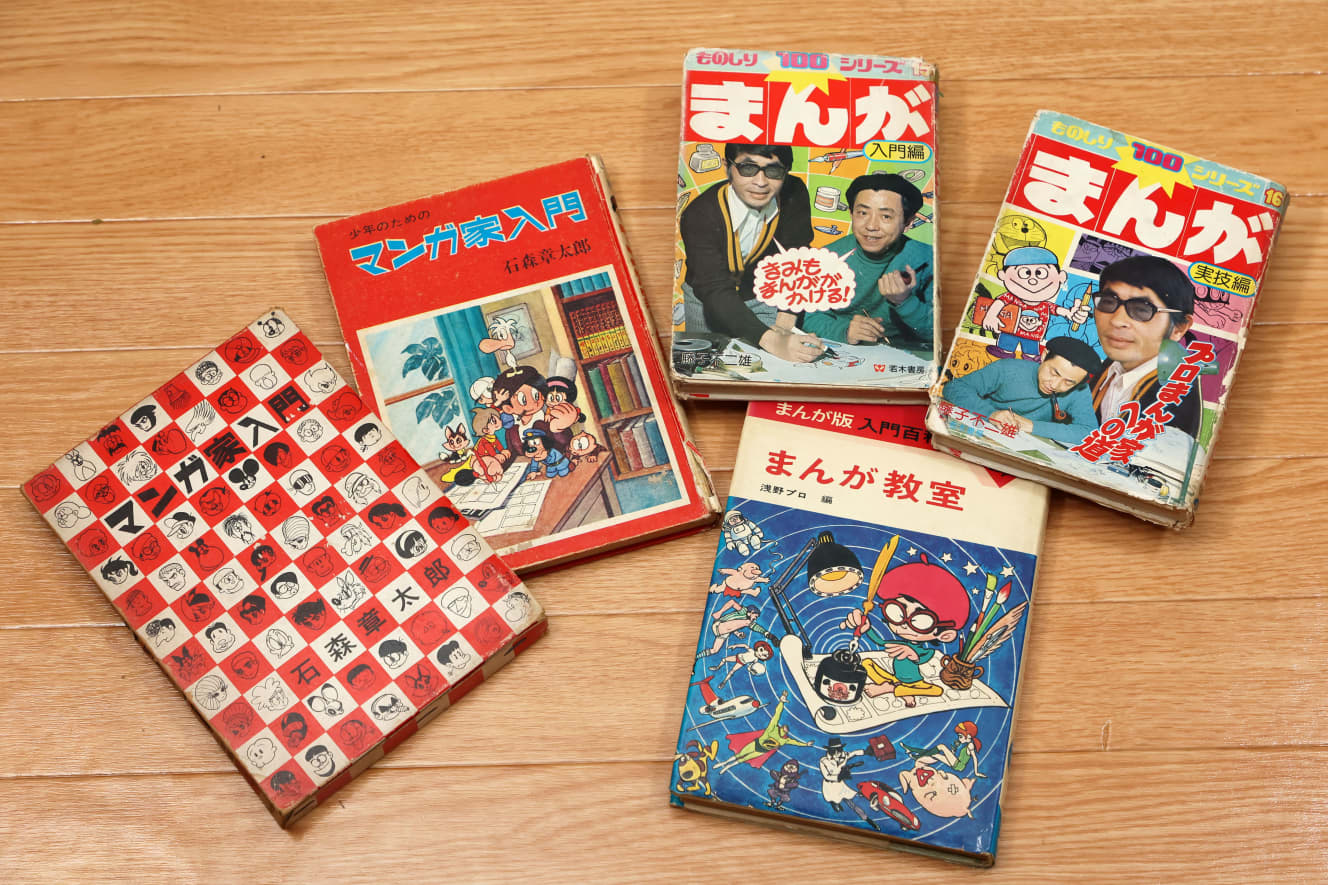
─ Ah, this one already has a good taste from the cover.
Ueno: It was originally serialized in Shonen Champion. In the last chapter of this book, it says, “Let’s make a coterie magazine!” It was something like that.
─ ─ That’s “Little Sun,” which also appears in “Manga-do. I was shocked by that.
Ueno: Then, when I was in the first year of junior high school, I started a coterie magazine with my friends. It was a hand-drawn, hand-painted circular magazine with a cover and everything. At that time, junior high school students did not have the means to print.
─ That was “Manga no Kanzume,” wasn’t it? I read the introduction article that Mr. Ueno has been writing serially on NOTE.
The Doujinshi Era “1”: Showa Era Junior High School Students Create Hand-Drawn Doujinshi!
Ueno: Yes, I started in the first year of junior high school, and continued publishing even after I entered high school. It is a miracle that it is still here.
Mikiya Mochizuki’s book on how to draw manga
─ As an aside, when I came here today, my editor asked me, “How did you get acquainted with Mr. Ueken, Ms. Tomisawa? I was asked. I think it was at a certain party where manga artists and writers gather, wasn’t it?
Ueno: When we first met, we talked about “Wild 7.
─ That’s right. I was shocked when I encountered “Wild 7” in junior high school. I aspired to be a manga artist because I admired Mochizuki Mikiya, but my goals were too high and my drawing ability could not keep up (laughs).
Ueno Oh yes, there is a book on how to draw Mochizuki’s manga, would you like to take a look? This was published after he passed away, but the content itself was already interviewed, so there are many of his comments in it.
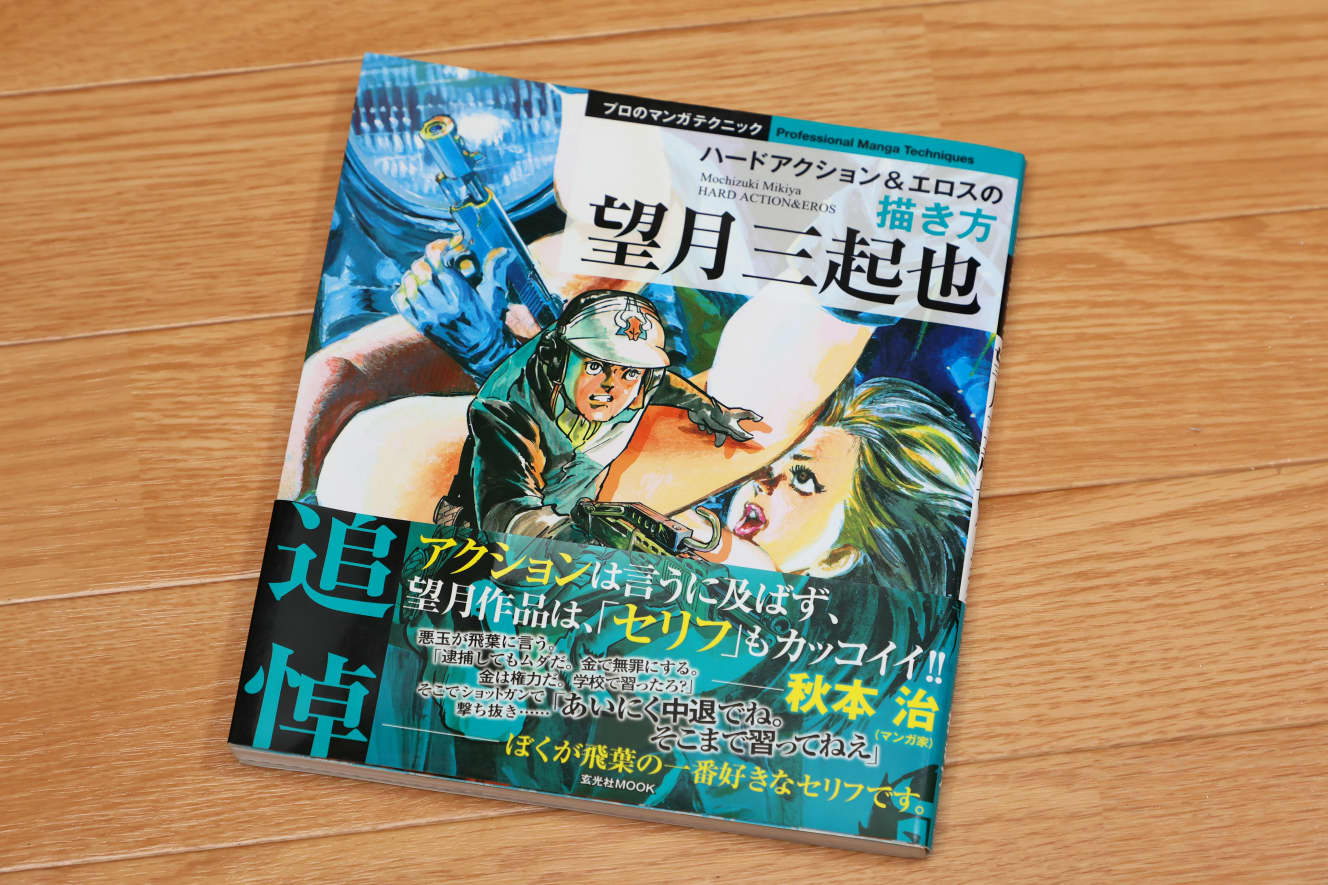
─ ─ I would have liked to have seen Mr. Mochizuki’s “Manbun” as well (tears). I had three sets of 15 volumes of “Himitsu Tantei JA” (Secret Detective JA).
Ueno: Three sets?
─ ─ The first edition, the new edition, and the latest edition from Shonengahosha. The cover design changes as the edition changes, so I buy one for each edition.
Ueno You are a collector (laughs). There is a website on the Internet called “Monthly Mochizuki Mikiya.
─ Yes, that’s right. You also contributed a column to the site, didn’t you?
Ueno: I was a close friend of Mr. Mochizuki in his later years, and about two years ago, I visited him at his home to listen to his stories and see his original manuscripts. Anyway, he is a person of great human power. He suddenly went to Germany without making a hotel reservation, made German friends there even though he could not speak German, and came back to visit us about a year later. He said that the German guy came back to visit him about a year later, and that they had a good time drinking and going home, even though Mr. Mochizuki couldn’t speak German and he couldn’t speak Japanese either (laughs).
LOL – good story! By the way, are you getting presbyopia, Mr. Ueno?
Ueno: I have to wear reading glasses when I work. Anyway, the trouble is that I can’t read the manga I used to draw.
─ Ah, haha. Mr. Ueno, you like to draw in detail.
Ueno: The manuscript of “50,000 verses” is impossible. When I received an award from the Agency for Cultural Affairs (“Yoru no me wa sen de desu desu” won the Excellence Award in the Manga Division of the 21st Japan Media Arts Festival in 2018), I had a panel discussion with Taro Minamoto and Yoko Matsuda, and we showed the original drawing of “50,000 Sections” on a big screen. I could finally see the details (laughs).
─ ─ Do you think it is possible to retrieve the raw manuscript of “50,000 verses” right now?
Ueno: Yes, you can. There are many opportunities to show it to people.
─ ─ Wow, ~~~~~!
(After the interview)
Since Mr. Ueno is a person whose style is to stuff himself full of stories, I had assumed that his collection was an extension of such excesses, but I was surprised to find that he himself was so unconcerned about the matter. However, it is more interesting to find unique perspectives in objects that are collected by people who are not collectors, rather than those who are collectors at heart.
When we were nearing the end of the interview, the moment the name “50,000 verses” came out of Mr. Ueno’s mouth, I thought of the “raw manuscript,” and when I asked him for it out of the blue, he readily showed it to me. Then it would be inevitable to make the last cut that one.
(This series will be updated on the first Friday of every month. The next installment will be on May 6. Please look forward to it!)
Interviewed and written by: Akihito Tomisawa
A self-proclaimed professional collector who continues to study the ecology of people obsessed with collecting. He is the author of "Bottomless! The World of Big League Cards" (Sairyusha), "Hitokui Eiga Matsuri" (Tatsumi Shuppan), "MUGEN no Hondana" (Chikuma Shobo), "Record Koshi no Sengo Shi" (P-VINE), and many other books are also related to collecting. His latest book is "Yusha to Tank to Monster 1978~2018☆Boku no Game 40-nen History" (Komakusa Shuppan), in which he looks back on his own relationship with video games.
Photography: Katsumi Murata

